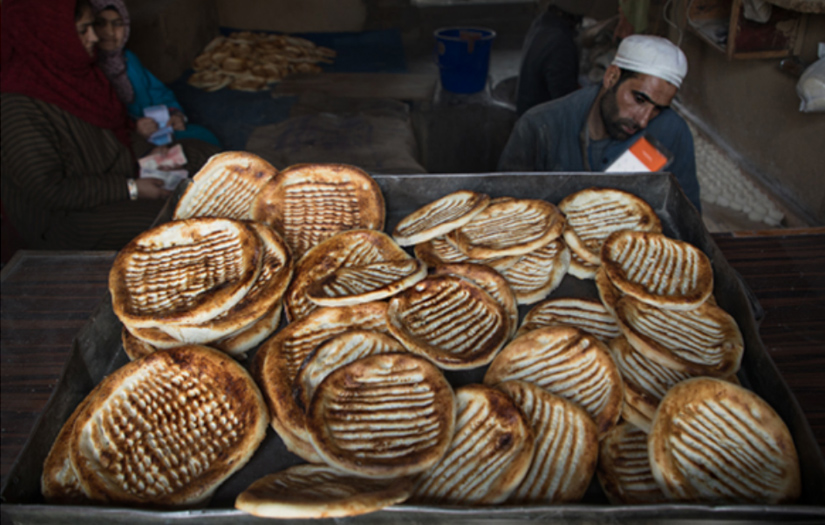The Enigmatic World of Kashmiri Kandoors
By : Javid Amin
In the picturesque landscapes of Kashmir, where snow-capped mountains kiss the sky, and the pristine Dal Lake reflects the beauty of the heavens, a unique tradition has long been preserved. The tradition of ‘Kandoor’ or traditional Kashmiri bakeries stands as a testament to the rich cultural heritage of the region. These bakers, colloquially known as ‘Kandoorwale,’ have served generations with freshly baked bread, embodying not only a culinary tradition but also a vibrant slice of Kashmiri life.
However, beneath the warm, wholesome exterior of these Kandoors lies an intriguing phenomenon. The size and weight of the bread produced by these traditional bakeries vary considerably from one locality to another. A closer look reveals that this variation is not random but often dictated by the area served. In the enchanting labyrinth of Kashmir’s localities, one finds a curious phenomenon – ‘bakeries by locale.’ Let’s delve deeper into this unique aspect of Kashmir’s cultural mosaic.
The Vagaries of Size: A Locale-Based Bakery Approach
For those unfamiliar with the Kandoor tradition, a visit to any of these bakeries would be an unforgettable experience. The soft aroma of freshly baked bread wafts through the air as these master bakers work their magic. The bread produced, known as ‘Kulcha’ or ‘Girda,’ is a delectable combination of crisp crust and soft, airy inside. It’s a treat for the senses.
One would expect this treat to be uniform, yet here’s where the twist unfolds. The size and weight of these bread loaves can significantly vary depending on the locality these Kandoors serve. From pristine, upscale localities to bustling, vibrant neighborhoods, the bread from a Kandoor is often tailored to the needs and preferences of the community it serves.
The Posh Neighborhood Dilemma: Smaller Bread, Lighter Feel
In the leafy, upscale suburbs and posh localities of Kashmir, the Kandoorwale tend to churn out smaller-sized bread. These loaves are delicately crafted and are known for their lighter feel. A key characteristic of these bread loaves is that they weigh less than their counterparts in other localities. The residents of these areas seem to prefer this petite version of the traditional bread.
Contrast in the Lively Localities: Bigger Bread, Heavier Experience
Now, step into the lively, bustling neighborhoods of Kashmir, and the bread served by the local Kandoorwale takes on a different character. The loaves are bigger and noticeably heavier. These neighborhoods have developed a taste for heartier portions of the traditional bread, with a more substantial feel in hand.
Quranic Verses: The Unseen Influence on Bread Size
Surprisingly, this variation is not merely a matter of convenience or consumer preference. The size and weight of the bread carry a unique cultural and perhaps even spiritual significance. In the Quranic verses, there is mention of wasting food being a reprehensible act. It is believed that this sacred guidance finds its way into the kitchens of Kashmir.
In areas where bread is served in smaller portions, it is often perceived as a gesture of responsibility. Smaller bread loaves lead to less waste, adhering to the Quranic wisdom. In contrast, in neighborhoods that favor heftier portions, it’s not about indulgence but rather a practice rooted in providing more substantial sustenance to residents.
A Quiet Question: Why No Authority Intervention?
In the midst of this fascinating culinary landscape lies a question – why haven’t the local authorities or regulatory bodies intervened to standardize the size and weight of these traditional breads? It’s an inquiry that remains largely unanswered, leaving the Kandoorwale to dictate the terms as per their communities.
As we journey through the lush valleys of Kashmir, the variety in bread size among these traditional bakeries is a reminder of the subtle yet significant cultural nuances that define the region. It’s a testament to the flexibility and adaptability of tradition in the face of evolving community needs. As long as the loaves are fresh and aromatic, the Kandoorwale of Kashmir continue to serve their communities, ever faithful to the traditions that make their craft not just a livelihood but a beloved piece of Kashmiri heritage.






